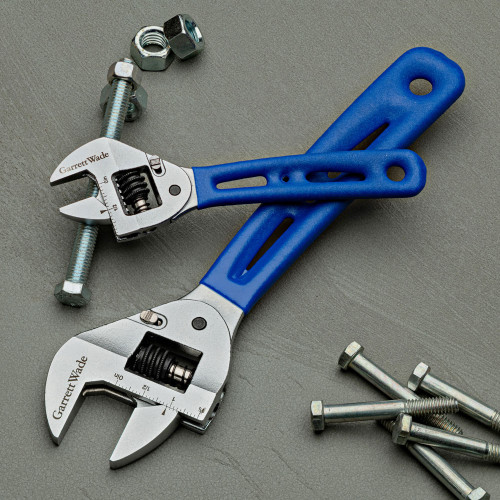6" Ratcheting Wrenches
The Crescent Wrench is probably one of the most common tools we use. But even the best suffer from the same flaw: the jaws do not hold their working position in use. As you move the jaws from one position to another on the nut, the movement inevitably causes them to open a bit – requiring you tighten them up before applying pressure again. The Garrett Wade Wrench stays where you set it – until you reset. We have also have 10" wrench (pictured above, but sold separately) that we highly recommend.
The other unique feature of the Garrett Wade Crescent Wrench is the ratcheting mechanism. Once the jaws are in position and you’ve started tightening the nut, instead of having to lift the wrench off the nut and reset the start position, you rotate them backwards to reset your starting position. The job goes faster – more efficiently and with less aggravation as a result. Max jaw opening is 6½" wrench is 1".

90-Day Money Back guarantee + Free returns

100% Free
No-Hassle Returns
-
The Crescent Wrench is probably one of the most common tools we use. But even the best suffer from the same flaw: the jaws do not hold their working position in use. As you move the jaws from one position to another on the nut, the movement inevitably causes them to open a bit – requiring you tighten them up before applying pressure again. The Garrett Wade Wrench stays where you set it – until you reset. We have also have 10" wrench (pictured above, but sold separately) that we highly recommend.
The other unique feature of the Garrett Wade Crescent Wrench is the ratcheting mechanism. Once the jaws are in position and you’ve started tightening the nut, instead of having to lift the wrench off the nut and reset the start position, you rotate them backwards to reset your starting position. The job goes faster – more efficiently and with less aggravation as a result. Max jaw opening is 6½" wrench is 1".

